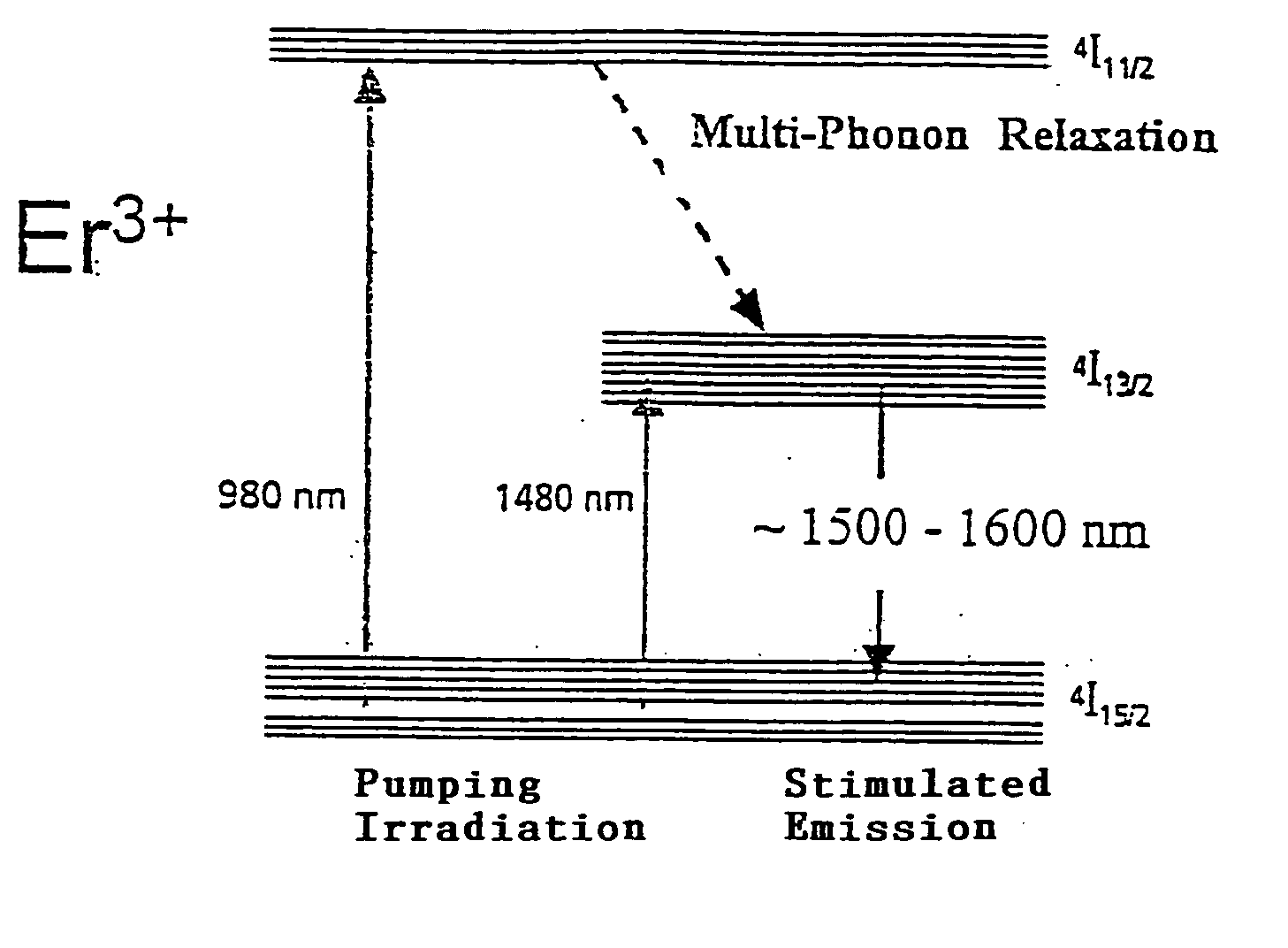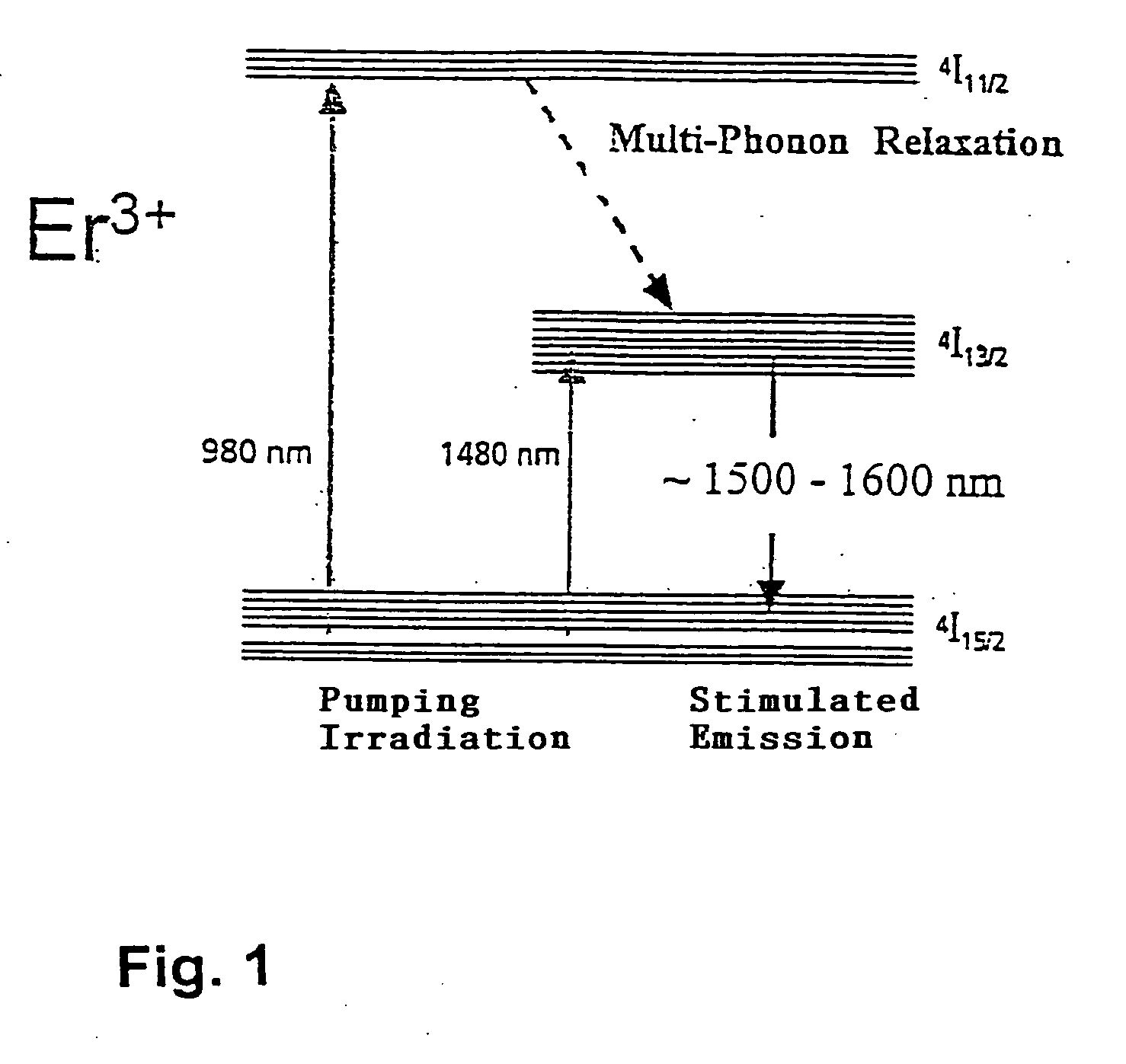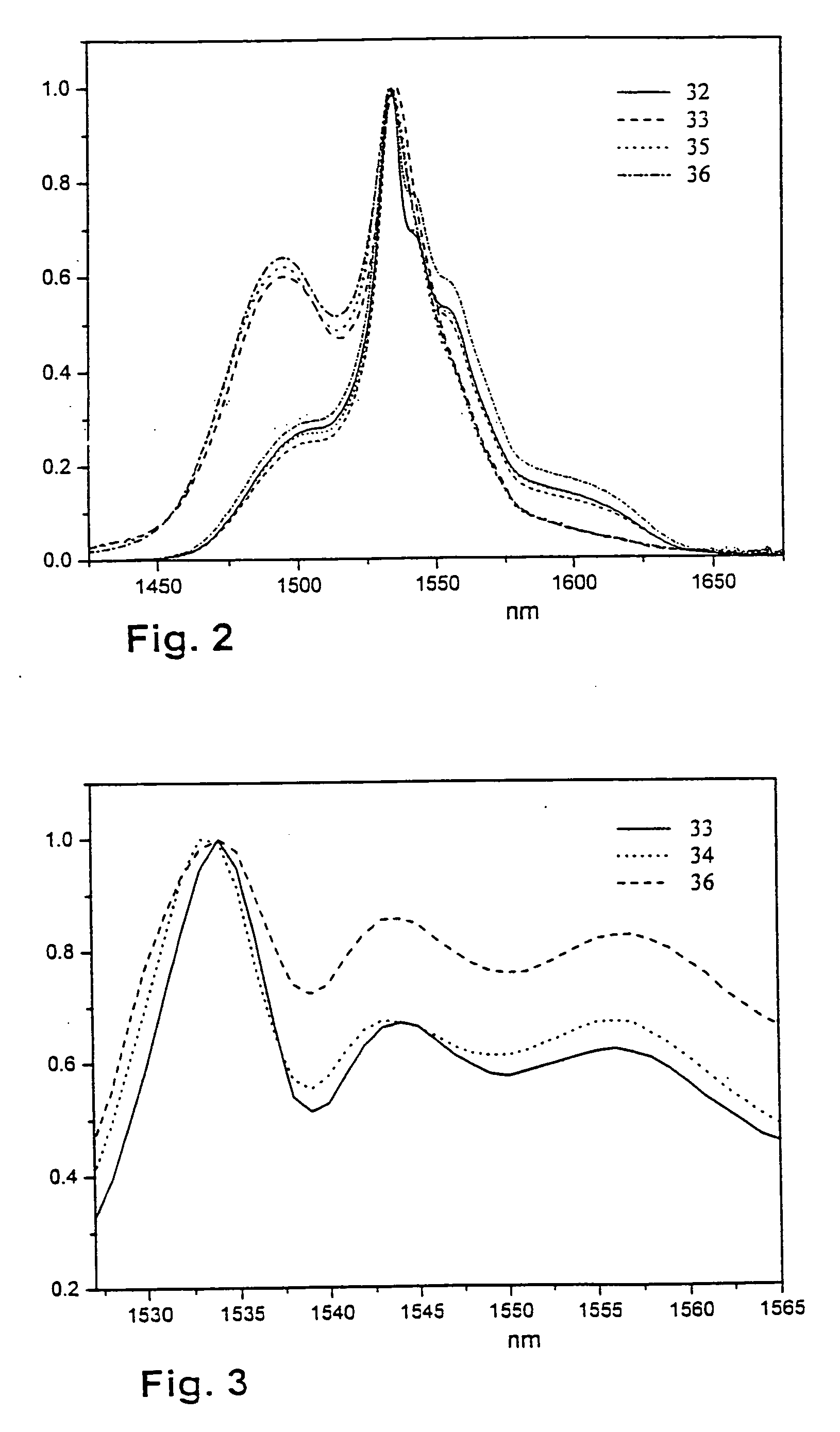Bismuth oxide glass and process of making thereof
a technology glass, applied in the field of bismuth oxide glass, can solve the problems of weak interatomic bonding force of glasses, mechanically less stable, and inability to meet the increasing demands of transmission bandwidth, and achieve the effect of reducing optical characteristics, oxidation state, and reliable stabilization of bismuth
- Summary
- Abstract
- Description
- Claims
- Application Information
AI Technical Summary
Benefits of technology
Problems solved by technology
Method used
Image
Examples
examples
[0061] The used glass compositions and the characteristics of the glasses are summarized in Tables 1 to 15.
[0062] Herein, partially also glasses not being subject of the invention are shown for comparative purposes.
[0063] All glass compositions of the examples were molten in platinum crucibles from pure raw materials not yet optimized with respect to trace contaminants. After about 1.5 hours the liquid glass was poured into pre-heated graphite molds and was cooled down from Tg to room temperature in a cooling furnace at cooling rates of 15 K / h.
[0064] In Table 1 the glass compositions of two glasses 1 and 2 according to the invention are shown in contrast to test glasses VG-1 and VG-2 which are not subject of the invention. The respective characteristics are summarized in Table 2.
[0065] While the glasses 1 and 2 had a relatively good glass stability, the two glasses VG-1 and VG-2 (without additions of SiO2 or B2O3) had a worse stability and were partially crystalline.
[0066] Addi...
PUM
| Property | Measurement | Unit |
|---|---|---|
| temperature | aaaaa | aaaaa |
| wavelength | aaaaa | aaaaa |
| diameters | aaaaa | aaaaa |
Abstract
Description
Claims
Application Information
 Login to View More
Login to View More - R&D
- Intellectual Property
- Life Sciences
- Materials
- Tech Scout
- Unparalleled Data Quality
- Higher Quality Content
- 60% Fewer Hallucinations
Browse by: Latest US Patents, China's latest patents, Technical Efficacy Thesaurus, Application Domain, Technology Topic, Popular Technical Reports.
© 2025 PatSnap. All rights reserved.Legal|Privacy policy|Modern Slavery Act Transparency Statement|Sitemap|About US| Contact US: help@patsnap.com



